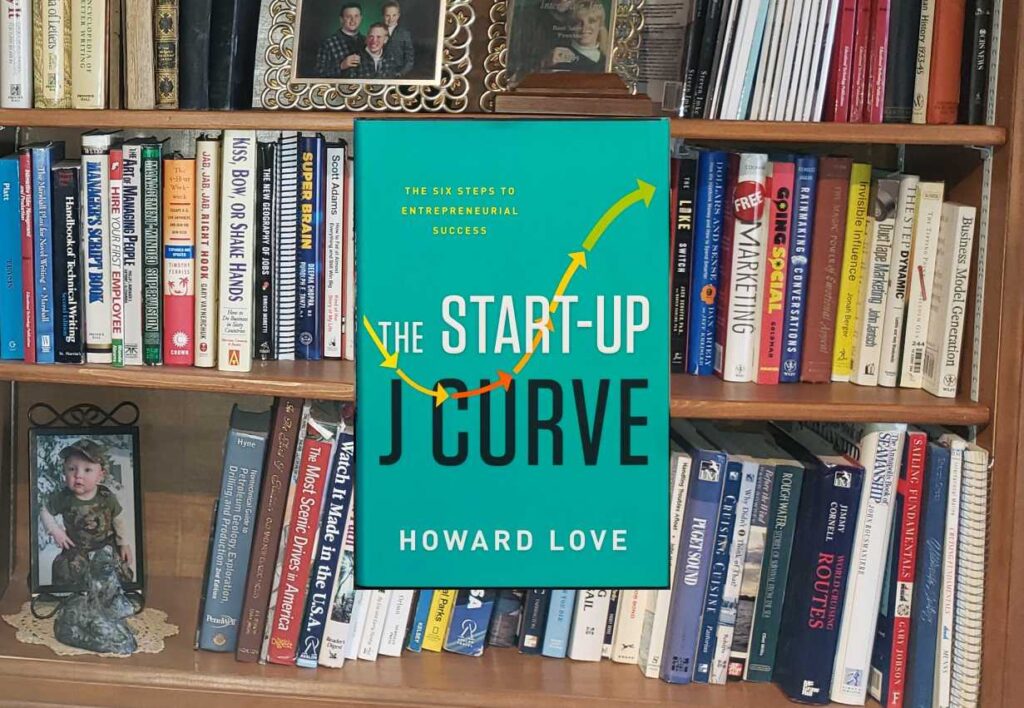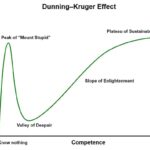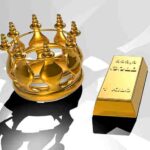Most successful businesses are forced to radically change their original idea after their initial launch if they want to survive. Unfortunately, most founders view the launch of their initial product or service in terms of a black and white outcome. Either their business idea was a success or a failure with no in between, causing many to see initial setbacks as a failure. What these founders fail to recognize is that the startup journey tends to follow a very predictable pattern known as the J Curve, which Howard Love documented in his book, The Start-Up J Curve.
Embrace the Dip
As a business founder, you must be prepared for the inevitable J curve dip. The general assumption that most founders have about the trajectory of their business is that there will be a linear upward progression. Essentially, they believe they will launch the business, people will love their offering, and sales will grow. However, this is rarely, if ever, the case.
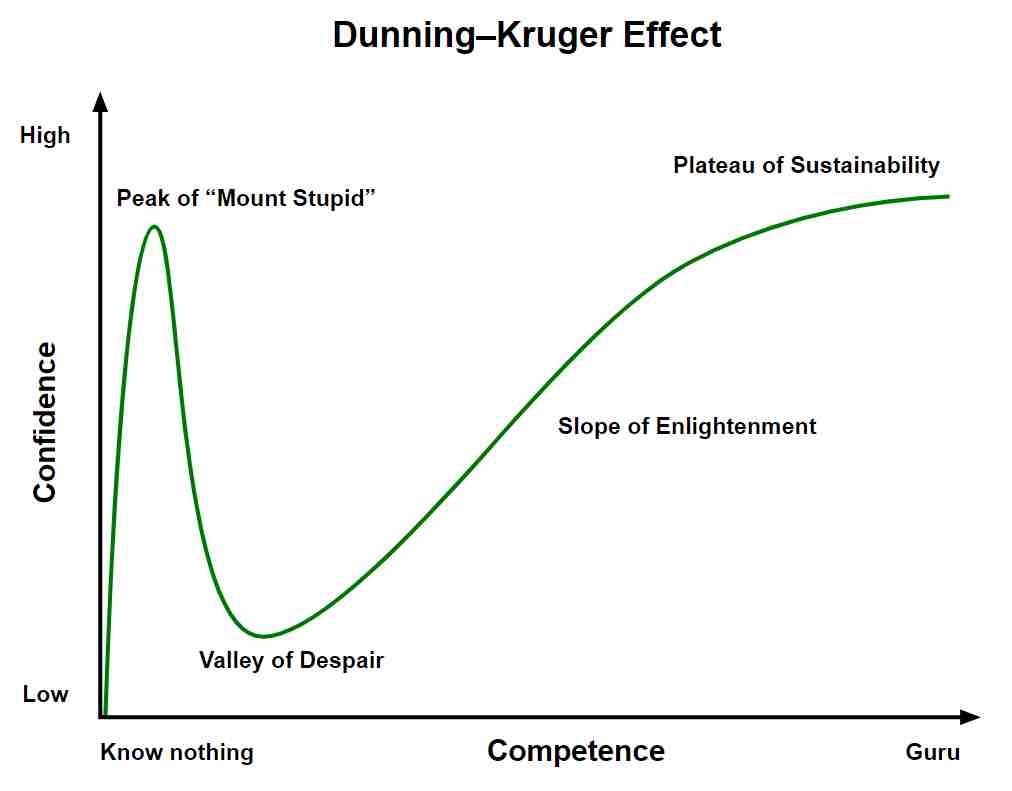
The J curve is defined by the emotional and psychological dip that occurs in the initial phases of a new business. The downward pressure on the founder that initially forms the J curve is based on the Dunning Kruger Effect.
The Dunning Kruger Effect is a cognitive bias of founder overconfidence. Founders are prone to overestimate their abilities. Founder overconfidence is based on the unrealistic expectation that they know far more about the industry and business than they actually do. During pre-launch, the Dunning Kruger Effect is fueled by the excitement of the new venture and the positive feedback, creating a reinforcing feedback loop as the founder climbs Mount Stupid.
As the founder approaches the launch, reality starts to rear its ugly head as unforeseen challenges begin to arise and reshape how they see their business psychologically, emotionally, and financially. These challenges exert downward pressure that initiates the formation of the J curve during the pre-launch stage as the launch date is often pushed back.
When they finally launch their offering, they discover that customers do not embrace their product or service as they hoped. They find out that their business model doesn’t work quite as well as they thought it would. And finally, they see that it costs way more than planned. In the Dunning Kruger Effect, they have shot past Mount Stupid and fell into the Valley of Despair, or what the J Curve calls the Valley of Death at the bottom of the J curve.
Founders not aware of the J Curve often see the Valley of Death as the end of their journey and admit defeat. However, for the informed founder, this is a very predictable place and does not represent the end but, as defined by the Dunning Kruger Effect, the beginning of the Slope of Enlightenment.
6 Phases of the J Curve
The startup J curve is divided into six distinct phases:
- Create
- Release
- Morph
- Model
- Scale
- Harvest
There is a limited amount of time, energy, and resources that you can apply to your new business. There will always be more opportunities and more options than you can pursue, so you must pick wisely. Understanding the J curve will allow you to allocate that time, energy, and resources more efficiently to move the business idea forward through each of the six phases.
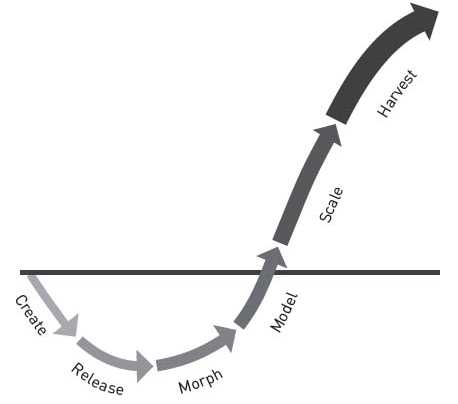
Let’s explore the six phases of the J curve in more detail.
Create
This phase of the J curve is where you refine the business idea. During the Create phase, you are validating your customer and problem hypothesis and validating if your solution hypothesis has legs. In the Create phase, you develop a series of Minimal Viable Products (MVP) to test your assumptions. You may even be raising some seed money from friends and family who are mainly investing in you rather than the actual merits of the idea at this stage because everyone is very optimistic about your business’s success during the early stages.
Release
This phase of the J curve is where you deliver your Minimum Marketable Product (MMP) to the market as soon as possible to get feedback. Rather than thinking of your MMP as your final product, treat your MMP as the first step in really understanding how the market will react to your offering so you can see where you need to make adjustments. During the release phase, avoid the temptation of feature creep as you try to create the perfect product. Think of your MMP as simply a stepping stone to get to the Slope of Enlightenment.
As we pointed out above, during the Release phase, you will come face to face with many unanticipated challenges. Customers may reject your solution, your initial business and economic models may fail to function as efficiently as anticipated, and cost overruns can create significant financial concerns for your venture.
A word of caution: If you see that your MMP is not getting the traction you expected, resist the urge to simply throw more money into marketing to get the word out. Remember, with the MMP, you are really still validating the product or service offering. By throwing money into extra marketing at this stage, you are skipping ahead to the Scale phase without going through the Morph and Model phase. This is often a waste of precious capital. Better to save your money so you can spend it in the Morph phase.
As you work your way through the Release phase, you’ll reach the bottom of the dip where you feel most psychologically, emotionally, and financially drained. The dip is not the point to raise the white flag and admit defeat. Your job in this phase is to identify the friction points so you can move to the next phase.
Morph
This phase of the J curve is where you take the lessons learned during the Release phase and make radical and drastic changes based on the feedback. In many cases, you may need to completely rethink your idea or make a major pivot. During this phase, the real epiphanies happen so that you can move your idea forward.
In my workshops, I often bring up the story of one of my mentors, Ron Muns. He initially developed a product to track computer assets, such as PCs and printers, for large companies. As he rolled out his MMP, he discovered the newly emerging IT industry. As he morphed his MMP into a Minimum Loveable Product (MLP), he refocused the tracking of computer assets to people and developed the first Customer Relationship Management (CRM) product.
I introduced the term Minimum Loveable Product because, in some cases, you may have to go through several iterations during the Morph phase to gain the desired level of customer traction to move to the next phase.
Model
This phase of the J curve is where you revisit your business and economic model as you progress along your Slope of Enlightenment. Take a step back and reexamine your customer-facing business model. What do you need to change to take full advantage of the new offering you created in the Morph phase? If you look at the Ron Muns example above, he changed his business model’s customer segment and value proposition. He pivoted away from the customer segment defined in his initial business model, namely large companies trying to track computer hardware, and chose instead to focus on the smaller IT customer segment, looking for a tool to track people.
Moreover, since there is a big difference between creating a product or service that people want and finding the most effective way to monetize it, you need to also look at your economic model to see if there are better ways to monetize your offering. Maybe your MLP’s economic model was based on a sales transaction where the customer paid you for your product or service. However, looking at other monetization strategies such as subscriptions, licensing, leasing fees, etc., may make more sense.
Companies like Xerox stopped selling copiers in favor of leasing them to companies, and Keurig decided to give away the coffee pots at cost, to sell their proprietary K-Cups. Both have shaken up traditional economic models to rise to prominence in their respective industries.
The ultimate goal of the Model phase is to find a business and economic model where you can invest additional cash to reliably and predictably generate more revenue and profits for the company.
NOTE: Keep in mind that there are five categories of adopters and that the customers for your MMP may be very different from those for your MLP. This is why the Morph and Model phases are so important. During the Morph and Model phases, you need to take the time to reflect on the future direction of the business before you progress to the next phase.
Scale
This phase of the J curve is where you bring together the people, processes, and additional money to really grow the business. By this time, you have eliminated enough risk from the venture that you can often get debt financing or raise money from investors without having to offer huge chunks of ownership to compensate for the business risk.

One of the most significant challenges that a business will encounter in the Scale phase is the changing needs of leadership. Up to this point, the founder is what I call the Oracle. As the business enters Stage 2, the founder either needs to undergo a major transformation to become the General, hire a General to replace the founder as CEO, or sell the business.
As an example, consider McDonald’s journey. Founded by Richard and Maurice McDonald, they were Oracles but were not the right people to scale the business. It required Ray Kroc, a General, to replace the McDonald’s brothers to make the most of the Scale phase.
Also, as we discussed in “7 Business Growth Stages – What CEOs Need to Know”, the priorities and skills of the leader need to change as the business grows.
Not only does the role of the leader change, but the business will need to replace the generalists required during the early phases with a more specialized workforce.
As the company continues to grow in the Scale phase, the business may also enter Stage 3, where it undergoes a substantial shift from an offensive, growth-oriented attitude to a more defensive one, focused on process improvement through business segmentation.
Over-hiring people with skills beyond the current growth level will provide the horsepower necessary to continue the growth trajectory.
Harvest
This phase of the J curve is where you reap what you have sown during the previous five phases. As a successful and still growing business, you are ripe for acquisition. Many founders not already replaced in the Scale phase will choose to get the company ready to be acquired.
How can you use your knowledge of the J curve for your startup?

